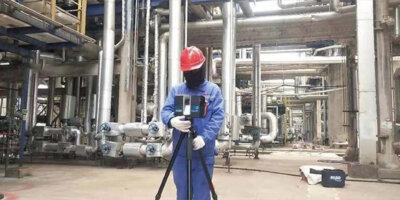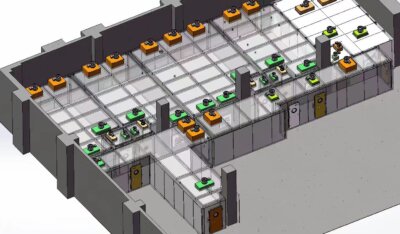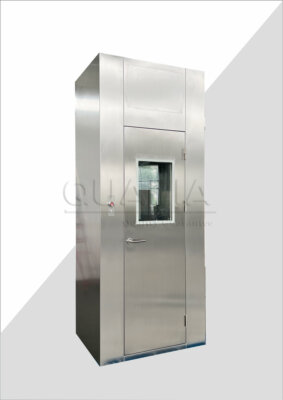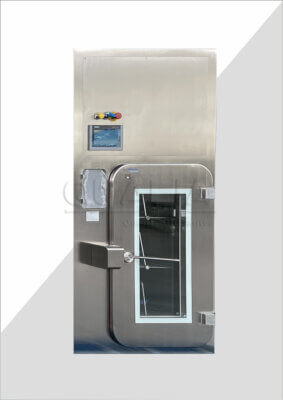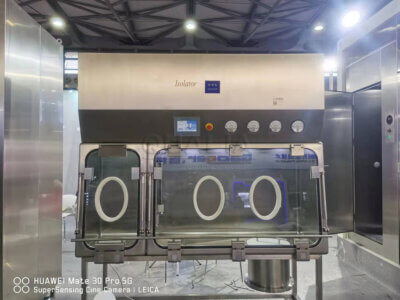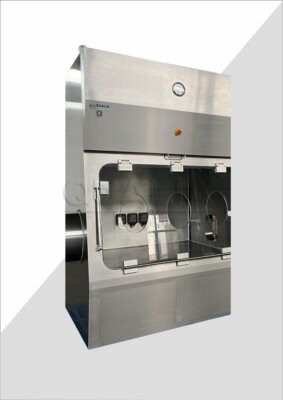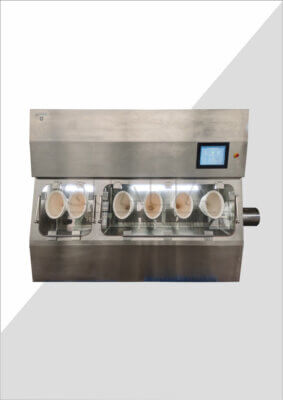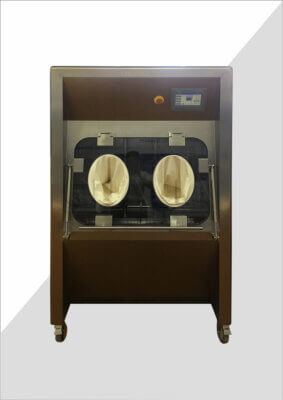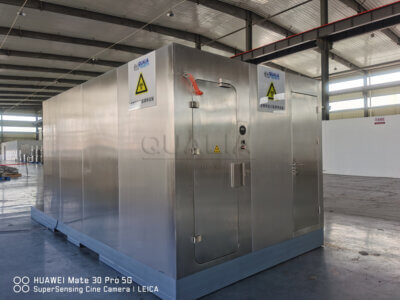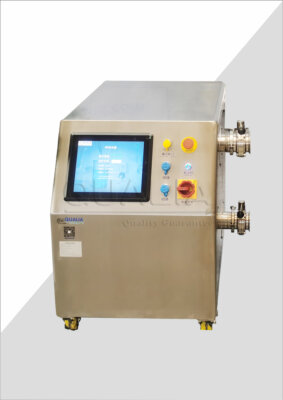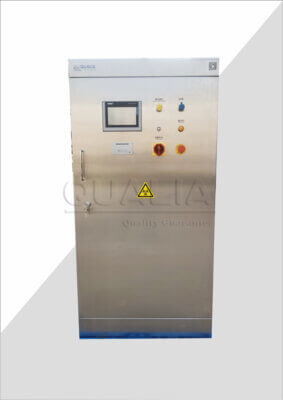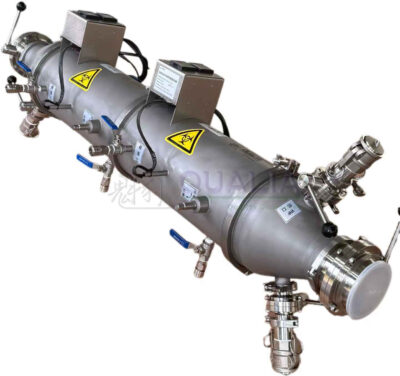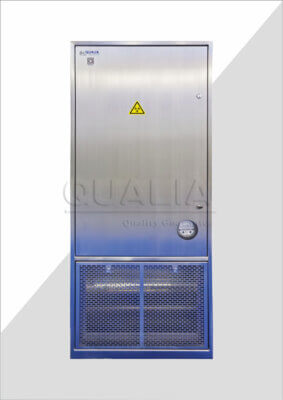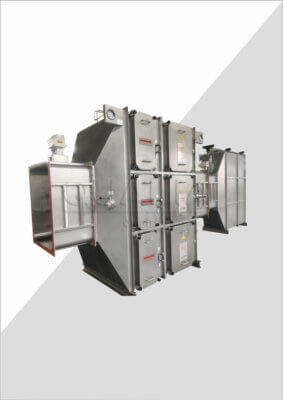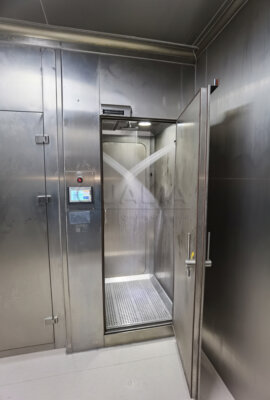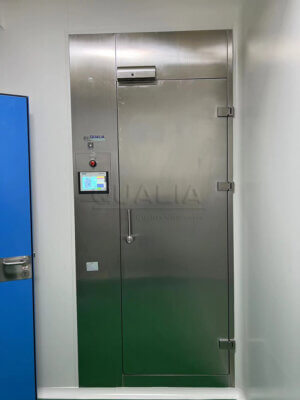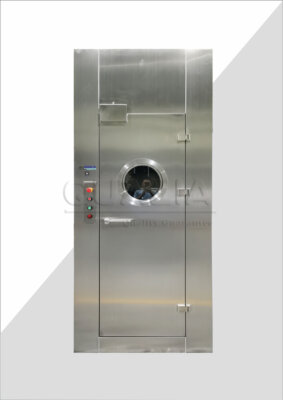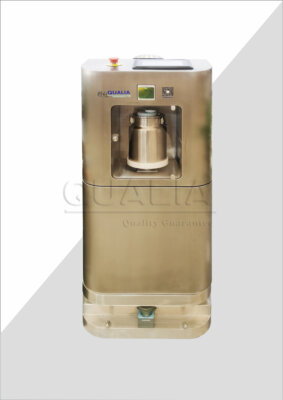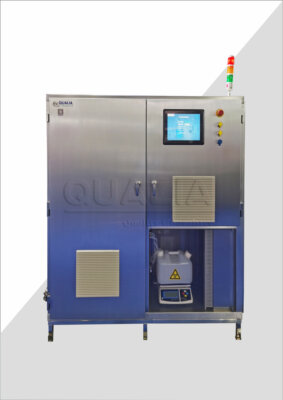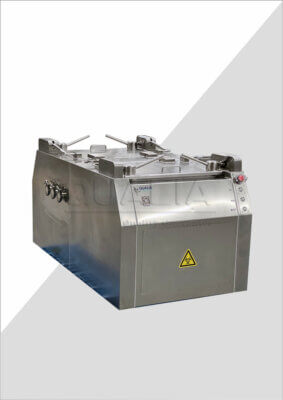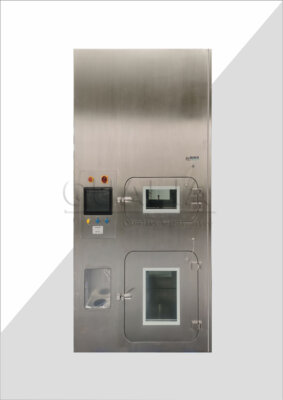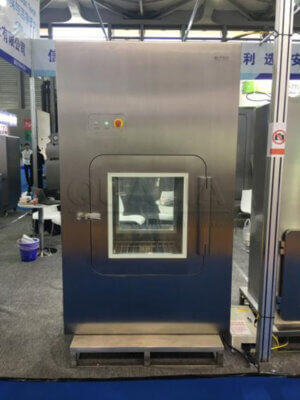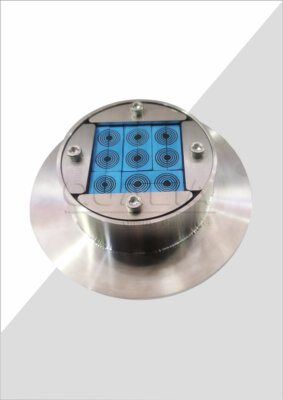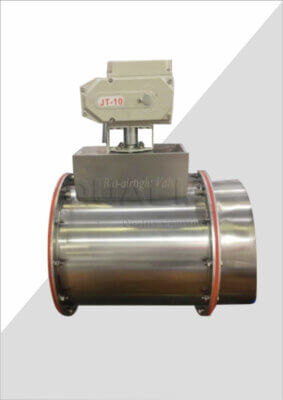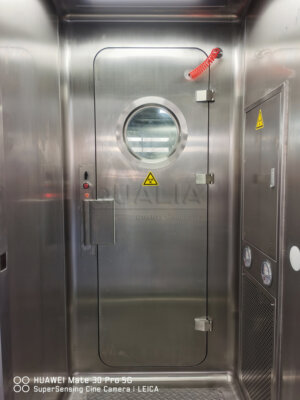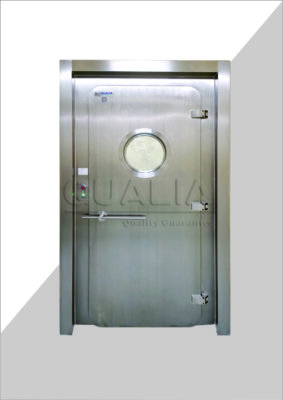The pharmaceutical industry is constantly evolving, with new technologies emerging to enhance drug manufacturing processes and ensure product safety. One such innovation that has gained significant traction in recent years is Closed Restricted Access Barrier System (Closed RABS) technology. This advanced system has revolutionized aseptic processing, offering a higher level of contamination control and operator protection compared to traditional cleanroom environments.
Closed RABS technology combines the benefits of isolators and open RABS systems, providing a robust barrier between the operator and the critical processing area. This article will delve into the advancements in Closed RABS technology, exploring its key features, applications, and future trends that are shaping the pharmaceutical manufacturing landscape.
As we explore the world of Closed RABS, we'll examine how this technology is addressing the growing demand for sterile drug production, the challenges it overcomes, and its impact on regulatory compliance. We'll also look at the latest innovations in Closed RABS design, materials, and automation, as well as the potential for integration with Industry 4.0 technologies.
"Closed RABS technology represents a significant leap forward in aseptic processing, offering enhanced product protection, improved operational efficiency, and reduced contamination risks compared to traditional cleanroom setups."
This claim is supported by extensive research and industry adoption of Closed RABS systems. As we delve deeper into the topic, we'll explore the evidence behind this statement and examine how Closed RABS is transforming pharmaceutical manufacturing.
| Feature | Open RABS | Closed RABS | Isolators |
|---|---|---|---|
| Barrier Integrity | Moderate | High | Very High |
| Decontamination Time | Short | Medium | Long |
| Flexibility | High | Medium | Low |
| Initial Cost | Low | Medium | High |
| Operational Cost | Medium | Medium | Low |
| Regulatory Acceptance | High | High | High |
What are the key components of a Closed RABS system?
Closed RABS systems are sophisticated technological setups designed to maintain the highest levels of sterility and contamination control in pharmaceutical manufacturing. These systems integrate several critical components to create a controlled environment for aseptic processing.
At the heart of a Closed RABS system is the physical barrier that separates the operator from the processing area. This barrier typically consists of transparent panels made from materials such as polycarbonate or tempered glass, allowing visibility while maintaining separation. The barrier is equipped with glove ports that enable operators to perform necessary tasks without breaching the controlled environment.
Another crucial component is the air handling system, which includes HEPA filters to ensure a continuous supply of high-quality, particulate-free air. This system maintains positive pressure within the RABS, preventing the ingress of contaminants from the surrounding environment.
"The integration of advanced air filtration systems in Closed RABS technology has significantly reduced the risk of airborne contamination, with some systems achieving air cleanliness levels exceeding ISO Class 5 standards."
| Component | Function |
|---|---|
| Physical Barrier | Separates operator from processing area |
| Glove Ports | Allows manipulation within controlled space |
| HEPA Filters | Ensures particulate-free air supply |
| Transfer Systems | Facilitates material ingress/egress |
| Control Systems | Monitors and regulates environmental parameters |
How does Closed RABS technology improve aseptic processing?
Closed RABS technology has revolutionized aseptic processing in pharmaceutical manufacturing by providing a robust barrier between the operator and the critical processing area. This enhanced separation significantly reduces the risk of contamination, which is crucial for maintaining product sterility and safety.
One of the primary advantages of Closed RABS is its ability to maintain a consistent, controlled environment. The system's design allows for continuous operation without the need for frequent interventions, minimizing the chances of introducing contaminants. This is particularly important for sensitive biologics and sterile injectables that require stringent aseptic conditions throughout the manufacturing process.
Furthermore, Closed RABS systems offer improved operator safety, especially when handling potent compounds or slightly toxic materials. The physical barrier and controlled airflow provide an added layer of protection, reducing operator exposure to potentially harmful substances.
"Studies have shown that implementations of Closed RABS technology in pharmaceutical facilities have led to a significant reduction in contamination events, with some companies reporting up to a 50% decrease in sterility test failures compared to traditional cleanroom setups."
| Improvement | Impact |
|---|---|
| Reduced Contamination Risk | Enhances product quality and safety |
| Consistent Environment | Improves process reliability |
| Operator Protection | Increases workplace safety |
| Continuous Operation | Boosts production efficiency |
What are the latest advancements in Closed RABS design?
Recent years have seen significant advancements in Closed RABS design, driven by the industry's need for more efficient, flexible, and reliable aseptic processing solutions. One of the key areas of improvement has been in the materials used for constructing RABS barriers. Manufacturers are now utilizing advanced polymers and composites that offer better durability, clarity, and chemical resistance compared to traditional materials.
Another notable advancement is the integration of rapid transfer ports (RTPs) and beta containers into Closed RABS designs. These systems allow for the safe and efficient transfer of materials in and out of the controlled environment without compromising sterility. This innovation has greatly improved operational flexibility and reduced the risk of contamination during material transfers.
Ergonomics has also been a focus of recent design improvements. New Closed RABS systems feature optimized glove port placements and adjustable working heights to enhance operator comfort and reduce fatigue during long production runs. Some manufacturers, like 'QUALIA', have introduced innovative glove systems that offer improved dexterity and tactile sensitivity.
"The introduction of modular Closed RABS designs has enabled pharmaceutical companies to adapt their manufacturing setups more quickly to changing production needs, with some facilities reporting a 30% reduction in line changeover times."
| Design Advancement | Benefit |
|---|---|
| Advanced Materials | Improved durability and visibility |
| Rapid Transfer Ports | Enhanced material transfer efficiency |
| Ergonomic Improvements | Increased operator comfort and productivity |
| Modular Designs | Greater flexibility in production setup |
How is automation being integrated into Closed RABS systems?
Automation is playing an increasingly important role in the evolution of Closed RABS technology. The integration of robotic systems and advanced control algorithms is enhancing the precision, consistency, and efficiency of aseptic processing operations.
One of the key areas where automation is making a significant impact is in the handling and transfer of materials within the Closed RABS environment. Robotic arms and conveyor systems are being used to perform repetitive tasks with a high degree of accuracy, reducing the need for human intervention and minimizing the risk of contamination.
Advanced sensor technologies are also being incorporated into Closed RABS systems to provide real-time monitoring of critical parameters such as air pressure, particle counts, and temperature. These sensors feed data into sophisticated control systems that can make automatic adjustments to maintain optimal conditions within the RABS.
"The implementation of fully automated Closed RABS systems has been shown to reduce human errors in aseptic processing by up to 70%, while simultaneously increasing production throughput by 25% in some facilities."
| Automation Feature | Impact |
|---|---|
| Robotic Material Handling | Reduces human intervention and contamination risk |
| Real-time Monitoring | Ensures consistent environmental conditions |
| Automated Decontamination | Improves efficiency of cleaning processes |
| Data Analytics | Enhances process understanding and optimization |
What role does Closed RABS play in regulatory compliance?
Closed RABS technology has become increasingly important in helping pharmaceutical companies meet stringent regulatory requirements for aseptic processing. Regulatory bodies such as the FDA and EMA have recognized the benefits of Closed RABS in maintaining product sterility and have provided guidance on their implementation and validation.
One of the key advantages of Closed RABS from a regulatory perspective is the enhanced contamination control it offers. The physical barrier and controlled environment provide a higher level of assurance for product sterility compared to traditional cleanroom setups. This aligns well with regulatory expectations for risk mitigation in aseptic processing.
Furthermore, Closed RABS systems facilitate better documentation and traceability of manufacturing processes. Modern systems are equipped with data logging capabilities that record all critical parameters and interventions, providing a comprehensive audit trail that is essential for regulatory inspections.
"Pharmaceutical companies that have implemented Closed RABS technology have reported a 40% reduction in the time required for regulatory approvals of new aseptic processing lines, due to the inherent contamination control features and robust documentation capabilities of these systems."
| Regulatory Aspect | Closed RABS Advantage |
|---|---|
| Contamination Control | Enhanced sterility assurance |
| Process Documentation | Improved traceability and audit readiness |
| Risk Mitigation | Reduced potential for human error |
| Validation | Simplified validation processes |
What are the challenges in implementing Closed RABS technology?
While Closed RABS technology offers numerous benefits, its implementation is not without challenges. One of the primary hurdles is the initial investment required for installing these advanced systems. The cost of Closed RABS equipment, along with the necessary modifications to existing facilities, can be substantial and may pose a barrier for smaller pharmaceutical companies.
Another significant challenge is the need for specialized training for operators and maintenance personnel. The complexity of Closed RABS systems requires a high level of expertise to operate and maintain effectively. This often necessitates extensive training programs and may require changes in staffing or skill sets within an organization.
Additionally, the integration of Closed RABS into existing production lines can be complex and time-consuming. It often requires careful planning and may result in temporary production halts, which can be disruptive to manufacturing schedules.
"Despite the challenges, a survey of pharmaceutical manufacturers found that 85% of those who implemented Closed RABS technology reported a positive return on investment within three years, citing improved product quality and reduced operating costs as key factors."
| Challenge | Mitigation Strategy |
|---|---|
| High Initial Cost | Phased implementation and ROI analysis |
| Training Requirements | Comprehensive staff development programs |
| Integration Complexity | Careful planning and expert consultation |
| Operational Changes | Gradual transition and process optimization |
What future trends can we expect in Closed RABS technology?
The future of Closed RABS technology looks promising, with several exciting trends on the horizon. One of the most significant developments is the integration of artificial intelligence (AI) and machine learning algorithms into RABS control systems. These advanced technologies will enable predictive maintenance, optimize process parameters in real-time, and enhance overall system performance.
Another emerging trend is the development of more flexible and adaptable Closed RABS designs. Manufacturers are working on systems that can be quickly reconfigured to accommodate different product types and batch sizes, providing greater versatility in pharmaceutical production.
The concept of "smart" RABS is also gaining traction, with systems incorporating Internet of Things (IoT) sensors and connectivity. This will allow for remote monitoring, data analytics, and integration with broader manufacturing execution systems (MES) and enterprise resource planning (ERP) platforms.
"Industry experts predict that by 2025, over 60% of new aseptic processing lines in pharmaceutical manufacturing will incorporate AI-enhanced Closed RABS technology, leading to a 30% increase in production efficiency and a 50% reduction in quality-related issues."
| Future Trend | Potential Impact |
|---|---|
| AI Integration | Enhanced process optimization and predictive capabilities |
| Flexible Designs | Improved adaptability to changing production needs |
| IoT Connectivity | Better data integration and remote monitoring |
| Sustainable Materials | Reduced environmental impact and improved longevity |
In conclusion, Closed RABS technology has emerged as a game-changer in pharmaceutical manufacturing, offering a perfect balance between contamination control, operational flexibility, and regulatory compliance. As we've explored throughout this article, the advancements in Closed RABS design, automation, and integration are driving significant improvements in aseptic processing efficiency and product quality.
The key components of Closed RABS systems, including sophisticated barrier designs, advanced air handling systems, and ergonomic features, work in concert to create a highly controlled environment that minimizes contamination risks while maximizing operator safety and productivity. The integration of automation and real-time monitoring capabilities has further enhanced the precision and consistency of aseptic processes.
Despite the challenges associated with implementation, such as high initial costs and the need for specialized training, the benefits of Closed RABS technology are clear. Improved product sterility, enhanced regulatory compliance, and increased operational efficiency are driving widespread adoption across the pharmaceutical industry.
Looking to the future, we can expect to see continued innovation in Closed RABS technology. The integration of AI, machine learning, and IoT capabilities promises to take these systems to new heights of performance and adaptability. As pharmaceutical manufacturing continues to evolve, Closed RABS will undoubtedly play a crucial role in shaping the future of aseptic processing, ensuring the safe and efficient production of life-saving medications for years to come.
External Resources
Closed Restricted Access Barrier System – Esco Pharma – Detailed information on closed RABS, including design, features, and advantages.
RABS vs Isolators: Choosing the Right Barrier System for Safe and Efficient Pharmaceutical Production – Hardy Diagnostics – Comparison of RABS and isolators, focusing on advantages and disadvantages of closed RABS systems.
RABS: Restricted Access Barrier System for Aseptic Processing in Pharmaceutical Products – Comecer – Explanation of how RABS and closed RABS systems minimize interventions in the critical zone.
Streamline® Closed Restricted Access Barrier System (SLC-RABS) – Esco Pharma – Description of the Streamline Closed RABS system, emphasizing its features and benefits.
Closed RABS (C-RABS) – EREA Pharma – Discussion on closed RABS design, including laminar-flow systems, HEPA filtration, and interlocking access doors.
Pharmaceutical Processing: RABS and Isolators – Pharmaceutical Technology – Overview of RABS and isolators, including applications, advantages, and future trends in pharmaceutical processing.
Advancements in RABS Technology for Aseptic Processing – International Journal of Pharmaceutical Sciences and Research – Journal article on recent advancements in RABS technology, focusing on improvements in design, materials, and operational efficiency.
Future Trends in Barrier Technology for Pharmaceutical Manufacturing – PDA Journal of Pharmaceutical Science and Technology – Exploration of future trends in barrier technology, including RABS and isolators, discussing emerging technologies and their potential impact.
Related Contents:
- Regulatory Compliance and Closed RABS in Pharmaceutical Production
- Unveiling the Best RABS for Your Facility
- Implementing Closed RABS: Ensuring Aseptic Processing Excellence
- Maintaining Sterility: The Critical Role of Closed RABS in Pharmaceutical Production
- Revolutionizing Pharmaceutical Manufacturing with Closed RABS
- Mastering Maintenance and Cleaning Protocols for Closed RABS
- Enhancing Pharmaceutical Production with Closed RABS
- Closed RABS vs. Isolators: Comparing Aseptic Processing Solutions
- Designing Effective Closed RABS for Sterile Drug Manufacturing


